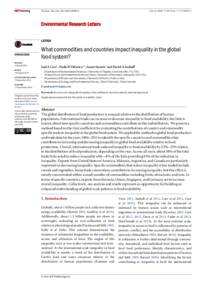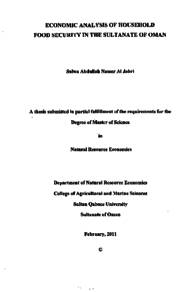Document
What commodities and countries impact inequality in the global food system?.
Identifier
DOI: 10.1088/1748-9326/11/9/095013
Contributors
Publisher
Institute of Physics Publishing.
Gregorian
2016-09
Language
English
English abstract
The global distribution of food production is unequal relative to the distribution of human populations. International trade can increase or decrease inequality in food availability, but little is known about how specific countries and commodities contribute to this redistribution. We present a method based on the Gini coefficient for evaluating the contributions of country and commodity specific trade to inequality in the global food system. We applied the method to global food production and trade data for the years 1986-2011 to identify the specific countries and commodities that contribute to increasing and decreasing inequality in global food availability relative to food production. Overall, international trade reduced inequality in food availability by 25%-33% relative to the distribution of food production, depending on the year. Across all years, about 58% of the total trade links acted to reduce inequality with ∼4% of the links providing 95% of the reduction in inequality. Exports from United States of America, Malaysia, Argentina, and Canada are particularly important in decreasing inequality. Specific commodities that reduce inequality when traded include cereals and vegetables. Some trade connections contribute to increasing inequality, but this effect is mostly concentrated within a small number of commodities including fruits, stimulants, and nuts. In terms of specific countries, exports from Slovenia, Oman, Singapore, and Germany act to increase overall inequality. Collectively, our analysis and results represent an opportunity for building an enhanced understanding of global-scale patterns in food availability.
Member of
ISSN
1748-9318
Resource URL
Category
Journal articles



